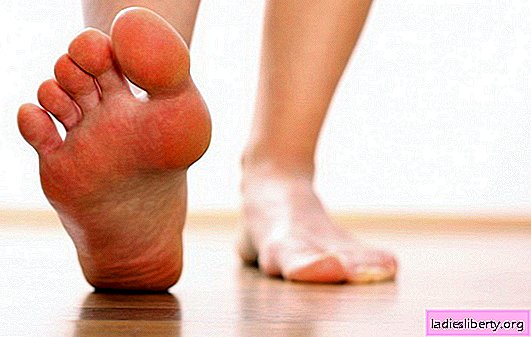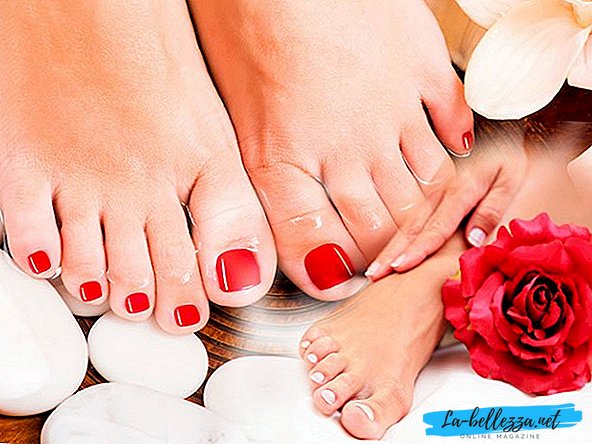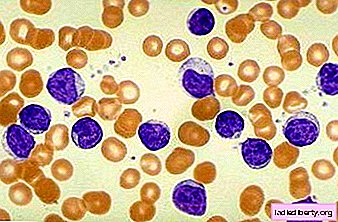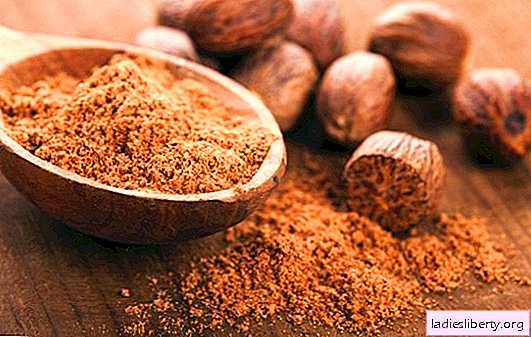
According to medical statistics, pain in the soles of the feet is perhaps the most common problem that people turn to a specialist (about 50% of all visits).
Pain in the soles of the feet is a common phenomenon, and everyone has met him at least once: it is enough to change shoes or unsuccessfully put his foot on and, suddenly, there is an occasion for visiting an orthopedist.
At the same time, pain syndrome is not so often indicative of severe pathologies, especially in young people.
But even despite the absence of a direct threat to health, it is impossible to call a condition when the soles of the feet hurt.
What is the source of sole pain and what to do?
The soles of the feet hurt: causes
The causes of pain in the feet are numerous. In all cases, the immediate cause lies in one pathology or another. Some of the diseases affect mainly the elderly. What are the most common sources of discomfort:
• Sprain. Everyone knows the situation when it comes time to change shoes (for example, when switching from shoes to shoes, etc.). The foot is forced to take another form, the load is distributed differently, hence the pain, discomfort. Such pains are transient in nature. Significantly more difficult are the stretch obtained as a result of physical activity: playing sports, etc.
• Diseases of the joints located in the foot area. Arthritis, arthrosis can be manifested by pain in the soles. Such discomfort is reflected. Arthrosis (degenerative changes in the joints) is affected by people engaged in physical labor, as well as those whose working day is on their feet: athletes, builders, movers, cooks, etc. Arthritis is found mainly in the older generation.
• Injuries. Tendon injuries (Achilles tendon) are manifested by moderate pain, aggravated by walking. Fractures (complete and partial), dislocations make themselves felt by much more severe pains that persist even in a state of complete rest.
• Inflammatory diseases of the muscles of the sole. The muscles of the sole can become inflamed from intense physical exertion, hypothermia, and related injuries. This pathology is called fasciitis.
• Metatarsalgia. The collective name of the group of pathologies covering all the anatomical structures of the foot. It is degenerative (dystrophic). Also characteristic of elderly patients.
• Neuroma. It is a process of slow growth of the nervous tissue of the sole. There is nothing to worry about: this process is under the control of the body, therefore it proceeds benignly. The reasons for the development of the neuroma are not fully known, it is assumed that the same overstrain of the foot plays a paramount role. Others highlight the wearing of uncomfortable shoes as a leading factor.
• Flat feet. It is accompanied by an uneven load on the sole and, as a result, the development of pain.
• Gouty arthritis. It is caused by the deposition of organic urate salts in the articular cavities of the foot. It affects people of any age.
• Other diseases of the musculoskeletal system. Pain from the legs, knees, and even the hips can radiate to the feet. If the soles of the legs hurt, it can also be a hernia of the lumbosacral spine. With hernias, the so-called. sciatica (compression of the sciatic nerve).
Other reasons are even more obvious, but deliver no less discomfort:
• Corns. Corns arise from constant mechanical action on the same section of the sole (friction, pressure, etc.). As a result, desquamation of the upper and subsequent layers of the skin occurs. Coarse growths occur. The pains in the calluses are burning, besides intense. Such a harmless problem at first glance creates serious discomfort and prevents walking.
• Warts. They arise, like corns, from permanent damage to the sole area. However, in this case, the leading role is played by the infectious factor. The human papillomavirus penetrates into the resulting wounds. As a result, tissues grow and intensely pigmented.
Soles of the feet hurt: concomitant symptoms
Pain in the sole rarely appears as the only manifestation, in addition, for one single symptom, it is not easy to suggest a diagnosis. More often it is a whole complex of symptoms that create a characteristic picture. Among the concomitant symptoms:
• Numbness of the skin of the sole, toes. Neurological symptom. Indicates a violation of nerve conduction in a particular area. More often indicates a hernia of the lumbosacral spine.
• Feeling of heat in the area of the sole (the feet really become hot to the touch). An alarming manifestation. It can talk about problems of rheumatoid origin, erythromelalgia (a disease that develops with insufficient circulation of the feet).
• Development of puffiness, swelling in the area of the sole. The most obvious reason is an injury. It also indicates problems of a rheumatoid nature.
In general, this symptomatic complex without additional studies does not give a clear idea of the nature of the ongoing process, but allows you to orient yourself.
Soles of the feet hurt: diagnosis
Diagnostic measures begin from the moment when the patient crosses the threshold of the specialist’s office. An inexperienced person in medical matters has a logical question: who should I contact with my problem? The first doctor to visit is a therapist. This is a kind of guiding beacon that helps to orient in further actions. Next, you should contact the specialized specialists:
• An orthopedist treats diseases of the musculoskeletal system (including arthritis, arthrosis, flat feet).
• The surgeon.
• Traumatologist (if the pathology is related to injury).
• A nephrologist is involved in the treatment of pathology of the excretory system: gouty arthritis often occurs due to chronic kidney disease.
Examination methods for patients whose main complaint is that the soles of the feet hurt are different. Among them:
• History taking. Oral questioning of the patient, aimed at identifying the causes of the disease, clarification of complaints, etc.
• Inspection. Visual assessment of pathologies of the musculoskeletal system is an independent and important part of the diagnosis. An experienced specialist is able to assume (and, as practice shows, with high accuracy) a particular disease at the first examination.
• Functional tests. They allow you to evaluate joint mobility, the occurrence of pain reactions, etc.
• Radiography. It makes it possible to identify injuries, as well as changes in the joints.
• CT / MRI. Due to its high cost and lack of technical equipment, most medical institutions are rarely appointed. However, all over the world, tomography (both magnetic resonance and computer) is recognized as the most informative method for diagnosing pathologies of bone structures, joints, soft tissues and blood vessels.
• Laboratory tests (blood biochemistry, general urine test, general blood test). Appointed with suspected arthritis. With a gouty form in the urine, the concentration of urates is increased (as well as in a biochemical blood test). With rheumatoid arthritis, a general blood test gives a picture of the autoimmune inflammatory process (eosinophilia manifests itself, etc.).
Sore soles of the feet: treatment
Pain treatment has two goals: eliminating the underlying cause and relieving symptoms. The range of therapeutic measures is wide: medication, orthopedic and even surgical treatment are practiced.
Drug treatment involves taking:
• Anti-inflammatory drugs (non-steroidal) to relieve inflammation (Ketorol, Nise, Ibuprofen, etc.).
• Analgesics. Especially often, analgesics are prescribed for neurological pain. There are many names: Baralgin, etc.
• Chondroprotectors. If the cause of the pain lies in the pathologies of the joints, you can not do without medications that restore damaged joints. They are expensive, so it is not recommended to take such drugs on their own.
Orthopedic treatment involves wearing dressings (plaster, elastic). It is used as the most common treatment for injuries. In exceptional cases, doctors resort to surgical treatment. Such cases are not so common:
• Complex fractures.
• Tendon damage.
• Complete or primary destruction of the joints.
In such situations, there is simply no alternative to surgery. The goal of treatment is to restore the anatomical integrity of various structures or to perform prosthetics.
Thus, if the soles of the feet hurt, there can be many reasons for this. Life is not a threat to life, but it can easily reduce its quality. Unpleasant sensations when walking - this is the least of the possible problems. In severe cases, it is a complete impossibility to step on the affected limb. Therefore, putting on "maybe" is not recommended. For a single pain relief, an analgesic tablet is suitable, but in the future you can not do without visiting a specialist. To cure any disease at its initial stage is much easier.











